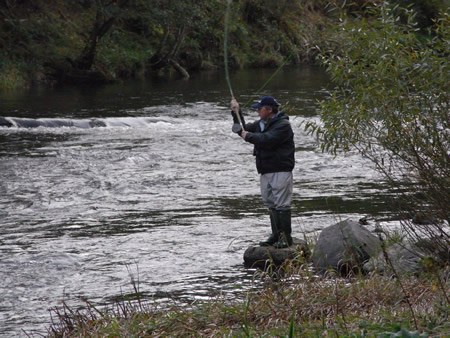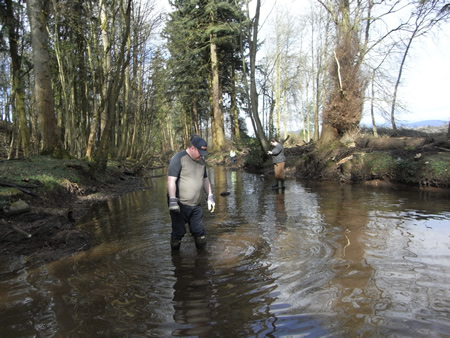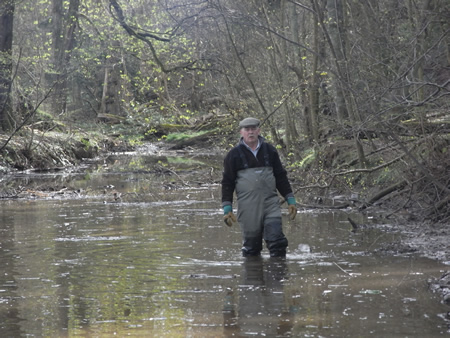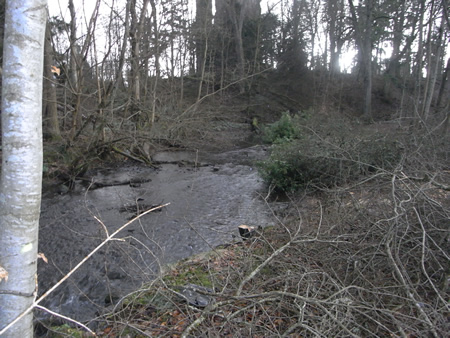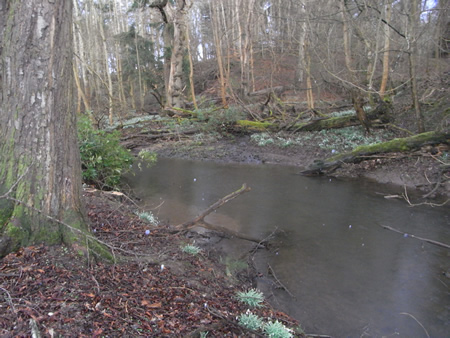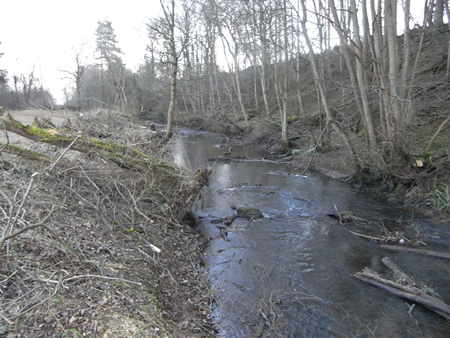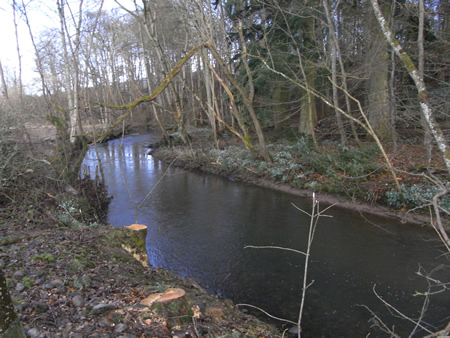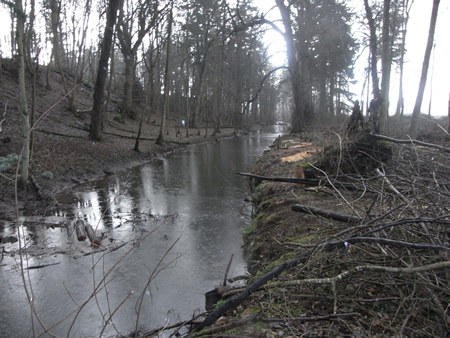These bulletin blogs represent news about Finavon and the South Esk, and my views as a riparian owner. They are not the views of any other organisation, nor are they designed to promote the interests of any individual or organisation other than Finavon Castle Water and factors affecting the fishery. Tony Andrews
In the light of the publication of 2011 catch statistics for all Scottish salmon districts, it may be useful to revisit my blog of last summer when, based on calculations of smolt production and ICES/NASCO returning adult fish percentages, I concluded that the annual run of salmon and grilse into the South Esk is about 10,000.
What did the nets catch in the September 2012 extension period? The item of news that should interest anyone who knows the South Esk is the number of salmon and grilse caught by Usan Fisheries Ltd during the two week extension of the netting season into September. This “two weeks” was actually eighteen tides, and the total catch was 272, of which the main part was grilse. I have good reason to believe that my source is reliable. TA
In 2011 I wrote;
“While there’s no room for complacency, it is very encouraging that in 2011 there are good numbers of spring fish in the river. Of course one swallow doesn’t make a summer, but it is also true that the 2010 run of spring salmon indicated a reasonable return of adult salmon, despite the poor rod catches resulting from low water yet again. The evidence therefore suggests that there appears to be a surplus of spring salmon year-on-year. By “surplus” I mean an escapement of fish to spawn that allows the regeneration of numbers of adult fish well above the minimum number required for sustaining stocks to return to the river between the start of the season and the end of May each year. That for me is the meaning of the term ‘sustainable’.
Ken Whelan fishing Pheasantry in May 2010 (above)
We don’t know how many salmon and grilse run the South Esk. It is a pity that the Esk Board has not devoted some of its considerable resources to a proper assessment of South Esk stocks, and continues to make management decisions on the current guesswork basis. We only have rod catch statistics to tell us what the trends are. But I will hazard a guess that the five-year average of returning adults, based on 60% of Usan net catches and the declared rod catch, plus our own observations, is somewhere around 10,000 fish. That figure has not yet been challenged and reflects more the general ignorance of the numbers and structure of South Esk stocks than it does on the actual numbers of fish”.
I based that speculative figure on 1,500 MSW fish up to 31 May, 3,000 MSW salmon and grilse in June, July and August and 5,500 MSW salmon and grilse from 1 September until spawning time (ie including salmon that enter the river after the close season on 31/10).
Since these figures were not challenged, and in fact a number of scientists commented that the method of reaching them was logical and consistent with experience from other rivers, I think it is fair to quote them again here. Based on those figures I wrote the following:
Average number of South Esk salmon and grilse killed by mixed stocks nets = c. 2,500*
Total number of salmon and grilse returning to the River = c. 10,000*
Total number of spawning females, allowing for 20% in-river losses = c.4,000
Average weight of spawning hen salmon = c. 8 lbs
Average number of eggs deposited by each hen fish = 4,500
Total number of eggs deposited in South Esk catchment (4,500 X 4,000) = c.18 million
Number of smolts produced annually by S.Esk (say 1% of total deposited eggs) = c.180,000*
Assume smolts returning as grilse is about 8% and of MSW fish about 5% (average 6.5%)
6.5% of 180,000 = c. 11,700 salmon and grilse arriving off the Angus coast (PFA) prior to nets exploitation.
Looking at those figures now, I really don’t see much need to change them. Perhaps I would reduce the return average from 6.5% to 6% to reflect the downturn in grilse numbers, and the proportion of fish caught at Usan and attributed to the South Esk more like 40% than 60%, but I think that those are the only adjustments neccessary.
In the context of those (admittedly speculative) figures I was interested to see the 2011 catch statistics published by Marine Scotland last week for salmon and grilse caught in the South Esk District. These returns include net and rod fisheries of fish killed and fished caught and released by rods. Nets of course kill everything they catch.
Here are the 2011 salmon and grilse catch returns for the South Esk District
Salmon killed = 5,646
Grilse killed = 1,203
salmon caught & released = 518
Grilse caught & released = 85
Total South Esk District catch = 7,452 salmon & grilse
If we take the figures for the South Esk District nets (the only legal nets being those belonging to Usan Fisheries Ltd) we see that:
In May 2,307 salmon were killed: average weight 4.13 Kgs
In June 1337 were killed: average weight 4.26 Kgs
In July 1053 were killed: average weight 4.2 Kgs
In August 746 were killed: average weight 4.36 Kgs
The consistent average weight of fish throughout the season (about 9lbs) suggests that there was a predominance of MSW fish throughout the season, expressed either as some very large MSW salmon offset by the lower average weights of grilse, or (more likely) a reflection of very low numbers of grilse, which would typically average 2 Kgs.
The figure that stands out in the 2011 season is the large number of 2,307 salmon killed in May. There are a number of aspects relative to this figure that are worth comment:
1. The value of 2.307 of prime spring salmon is very high. One may assume a per fish value of £150 to £200, giving a gross income to Usan Fisheries Ltd for May month of £300,000 plus. No wonder the Usan business doesn’t want May removed from the netting season, as has already happened in February, March and April.
2. If the 2012 radio tracking data are used to indicate how many of these May fish were bound for the South Esk, we might assume, from the proportion of recorded tagged salmon in the South Esk, that 40% of those 2,307 salmon killed in May 2011 were South Esk fish.
3. Upper proprietors observed that there was a prolific run of spring salmon in 2011. Usan’s May return confirms that the spring run continued to be strong into May. Based on Usan’s May catch return we might assume that about 900 of those fish were of South Esk origin. That figure tallies with my guess that an average of 1,500 salmon enter the South Esk before the end of May.
4. Catch returns from Cortachy & Downie Park, Inshewan and Finavon indicate that there were good numbers of MSW salmon in the South Esk from March onwards, and of course with no netting taking place in March and April, these salmon had free access to the river. Moreover, none of the rod-caught salmon in those two months was killed. Spawning escapement in 2011, even with the 900 fish killed in May by Usan nets, was clearly significant.
It is important that the Marine Scotland radio tracking project fulfills its purpose, which is to find out where early running South Esk salmon spawn. The project has nothing to do with stock assessment beyond that single purpose, although people (such as I!) will inevitably extrapolate from the data to support their arguments. We need to have a health warning on such methodology because the data coming from the MS project are not fit for any purpose other than demonstrating where some spring fish go in the South Esk catchment.
TA
